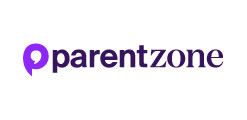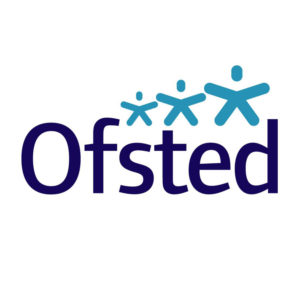Chapter Contents
- Introduction
- Smoke Alarms
- Electrical Appliances
- Electric Powered Personal Vehicles (EPPVs)
- Flammable Products and Materials
- Cooking
- Fire Evacuation Plan
- Emergency Action
Introduction
A household fire can be a serious risk to life and lead to the property and its contents being damaged (either directly, or from smoke or water).
By taking some simple precautions you can reduce the likelihood of a fire starting and significantly reduce the damage caused if one does start.
N.B. Some children may be particularly drawn to fire or have a history of fire-starting. You will need to be particularly vigilant in these cases to secure any ignition sources and offer additional supervision.
Smoke alarms
A smoke alarm is the simplest single step you can take to cut the risk of dying from fire. The cost of smoke alarms is minimal and some fire authorities may fit them free. If your home is on more than one floor, you should fit at least one smoke alarm on each floor. Check that the alarms are loud enough to wake all sleepers.
Regularly check your smoke alarms to ensure they are still working. It takes a few seconds to test a smoke alarm. Test your alarm once a week and change the battery once a year (unless it’s mains powered or has a 10-year battery). Twice a year, vacuum the inside to remove dust.
Electrical Appliances
Do you have enough sockets to prevent overloading power points? Electrical Safety First has a helpful online calculator to help you find out.
Are any of your electric cables worn or taped up? If they are, they aren’t safe and you should replace them.
If you have any electric blankets, check for fraying, scorch marks, dampness and loose connections as these are all dangerous. Don’t leave electric blankets switched on at night unless they have thermostatic controls for safe all-night use. Always store them in accordance with the manufacturer’s instructions.
Turn off and unplug electrical appliances when not in use (unless they are designed to be left on, e.g. a DVD player that displays the date and time). In a power cut, switch off electrical appliances until power is restored.
LED lightbulbs are good for children’s lamps as they do not generate heat.
Electric Powered Personal Vehicles (EPPVs)
EPPVs, such as electric bikes and scooters need to be charged carefully to prevent house fires. Please follow this advice, and see the London Fire Brigade’s website for more information:
- Store and charge EPPVs in a dedicated location outside of the home;
- Don’t block escape routes in the home with EPPVs or their batteries;
- Only use the correct charger for the vehicle;
- Don’t remove batteries from EPPVs or bring them into the home for charging;
- Charge EPPVs in accordance with the manufacturer’s instructions.
More information is given in the Electric Bikes and Scooters section further down this page.
Flammable Products and Materials
Is your upholstered furniture fire-resistant? If it was made before 1988 then it might not be fire-resistant, which means it could set alight easily and produce clouds of toxic smoke. Check the label on your furniture to be sure. Ensure furniture and furnishings are not too close to sources of heat which could cause them to catch fire, e.g. open fires, candles etc.
Are aerosols and flammable materials stored correctly, away from heat sources and away from children? Aerosols should not be stored on window ledges as the heat from the sun can cause them to explode. Always store these items in cool places.
Don’t store combustible items under the stairs; a fire could cut off your emergency exit.
Keep matches and lighters away from children.
Never leave candles unattended. Keep candles in a stable holder, on a heat-resistant surface and away from flammable materials.
Cooking
Is the cooker clear of flammable objects? Keep wires, cloths and oven gloves away from the cooker top. Never leave pans unattended on the hob, and turn pan handles away from the room so that they cannot be accidentally knocked.
Don’t overfill chip pans. It is dangerous to fill them more than a third full. If the oil starts to smoke don’t put food in – leave the pan to cool. Make sure the food you’re cooking is dry. Thermostatically controlled deep fat fryers are much safer than chip pans. In the event of a chip pan fire, don’t move the burning pan, and don’t throw water over it. Use a fire blanket to extinguish the fire, or a damp towel. If you cannot extinguish the fire quickly, leave the house and call 999.
Fire Evacuation Plan
At your initial Household Health & Safety check, you will create a Fire Evacuation Plan. Your assessing social worker will review and update it when you have your annual review.
Include everyone who lives in your home. Everyone, including children, should know exactly what to do if there is a fire.
- Choose an escape route – the easiest way out. Pick a second escape route in case you cannot access the first one.
- Always keep the door and window keys in the same place, and make sure everyone knows where they are.
- Keep the escape route clear of obstructions.
- Close interior doors at night to limit the spread of fire.
- Test your smoke alarm every week to make sure it will go off in the event of fire.
Emergency Action
If you are unable to escape from the home in the event of fire, take the following action:
- Get everyone into one room – ideally one with a window that opens and a phone.
- Shut the door and put bedding/cushions along the bottom of the door to keep smoke out of the room.
- Open the window and shout for help.
- Phone 999 and tell them your location in the home.
For more information about fire prevention, detection and escape, visit here.



